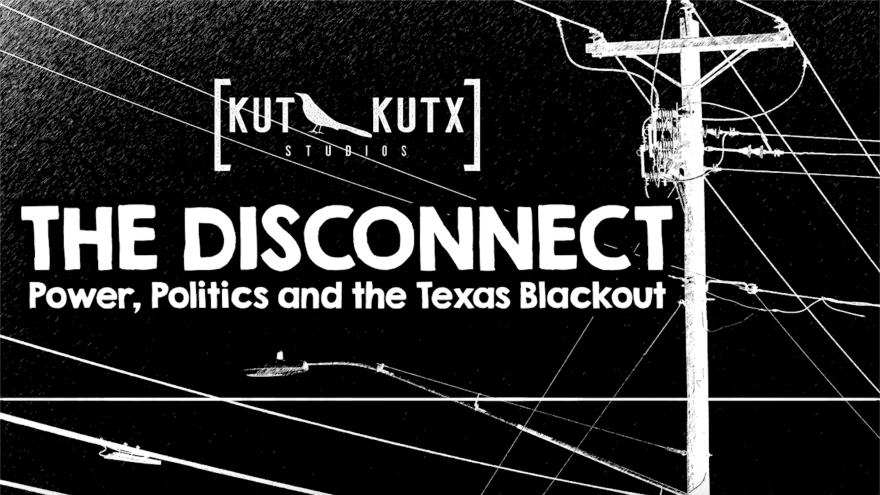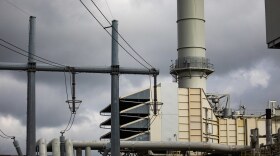Ski masks. The cover of night. The smuggling of resources across borders.
These are some of the ingredients that go into the myth of an event memorialized as the “Midnight Connection.”
On May 4, 1976, a power company based in Texas sent electricity from a substation in Vernon, Texas, to Altus, Okla. By doing so, they were breaking a deal among power companies in Texas to keep electricity within state borders.
On its face, the company’s decision to hook up power between Texas and Oklahoma was a move to protect its business interests. But the legacy of the Midnight Connection has gone far beyond that. The short-lived attempt to bind the Texas grid more closely with the rest of the country raised questions about Texas' electric reliability and oversight that, since the 2021 blackout, seem even more pressing today.
“The battle was exhilarating, and it taught us a great deal about the pros and cons of interconnection,” said Richard Cudahy, who authored what appears to be the definitive article on the subject, titled "The Second Battle of the Alamo: The Midnight Connection."
What led to the Midnight Connection?
In 1935, the U.S. enacted the Public Utility Holding Company Act. It required electric companies that oversaw different utilities to be integrated — that is, to have physical connections with each other so that power could flow between them.
This created a big problem for one power company with holdings in Texas. Central and Southwest Corporation owned four utilities in Texas, Oklahoma and Louisiana. They needed to connect them or the company would be broken up.
The problem was this: electric providers in Texas had long maintained an informal agreement not to send power across state lines. The decision was made as a way to avoid federal regulation. If power stayed in Texas, companies and the state regulators they worked with had more control.
Central and Southwest Corporation had a choice to make: either break the Texas agreement not to send power over the border or submit to federal law and get broken up into smaller companies.

“It was destined for the scrap heap unless it could attain electrical integration, which required joining each of its four constituent utilities, not only in ultimate ownership (as already has been accomplished) but also in the purposeful exchange of electricity," Cudahy wrote.
Fortunately for the company, about four decades passed before anyone called attention to the fact that Central and Southwest utilities were not connected with each other. In the early 1970s a lawsuit was filed on behalf of electric utilities in Oklahoma, arguing that Central and Southwest was not following federal law.
In response, the company conducted a study to show the benefits of connecting its four power utilities — even though that meant connecting across state lines. The study argued that doing so would make their utilities more efficient and save customers money. In other words, connecting was a no brainer.
“I think that we felt like we had a good position, a good public interest position to pursue and to carry this out to achieve those savings for our customers,” said Holman King, a vice president at the time of one of the company's utilities, West Texas Utilities.
It was then that Central and Southwest decided to make a bold move. It would connect two of its utilities and send power across state lines in defiance of the Texas agreement not to, in what has since been coined the “Midnight Connection.”
“They realized they had to do something. And their answer was to connect across the Red River and into Oklahoma,” Brad Jones, interim CEO of the Electric Reliability Council of Texas, told KUT.
“It’s some dramatic stuff.” he said. "They just kind of threw a [power] line across the red river.”
You might imagine a crew of transmission workers in ski masks and black clothing, stealthily creeping around this substation, preparing to secretly throw a switch.
But King said the event wasn’t as dramatic as legend has made it. The connection was likely made around midnight, but the move itself was made to force a legal confrontation, not to secretly smuggle electricity.
“It was a legal strategy to demonstrate that interstate service would have no effect on the electric operation in Texas,” King said.
What happened right after the Midnight Connection?
Once other utilities realized a connection across state lines was running, the real drama started. Texas power companies began disconnecting themselves from West Texas Utilities and from each other. The thinking was that if they stayed linked to a system that was now connected to the grid in Oklahoma, they too would be subject to federal oversight.
While utilities in San Antonio and Austin remained linked, Houston Lighting and Texas Utilities severed ties with the rest of the grid.
“The Midnight Connection therefore presumably placed the entire state of Texas and all its utilities under federal jurisdiction,” wrote Cudahy. “These utilities had arguably suffered the irrevocable taint of interstate power.”
Outside of responses from other utilities, the Midnight Connection forced the anticipated legal and regulatory battle. The Public Utility Commission of Texas, which had formed just the year before, suddenly had a major scandal to reckon with.
“They were new,” King said. “They’d had a hot potato dropped in their lap that they really didn't want or really didn't know what to do with.”

While initially it appeared both sides of this argument over interconnection were protecting business interests, it quickly became clear that the fight was over much bigger issues.
King, who was a trained electrical engineer, said interconnection just made sense from a reliability and efficiency perspective.
“I think if you stop and look, you will see, first of all, interconnections are practiced throughout the world as a means of reliability, that it’s an accepted practice,” he said.
But to the other Texas utilities, the fight against interconnection was about Texas independence. King said some of this was demonstrated by the tenor of the PUC hearings at the time.
“There was an awful lot of name calling by the attorneys,” he said. “They were talking about pirates and hostages and things of that sort.”
Cudahy titles his article “The Second Battle of the Alamo” for this precise reason. He says the side fighting against interconnection viewed this battle as one for Texas’ right to forgo federal oversight and to remain isolated from the rest of the country’s electric grid.
To King, that reasoning is absurd.
“I simply don't understand and I am unpersuaded that there is a benefit other than Texas boosterism for maintaining isolation,” he told KUT.
A year after the electric connection between Texas and Oklahoma had been made, the PUC ordered it to be cut off. The losses for King’s side continued to come. Amidst a flurry of legal filings, a judge ruled in 1979 that the PUC order stood.
The isolationists, as King called them, had won. To this day, Texas maintains its own grid.
What is the legacy of the Midnight Connection?
While the Midnight Connection took place just outside Vernon, few people in the town have heard of it.
“I’ve lived in Texas all my life, but I wasn't aware of it,” Marty Mangum, the Vernon city manager, told KUT.
A local librarian, the owner of the historical society and a city commissioner also had never heard of it.

But even if the particulars of the event have faded, the repercussions of the Midnight Connection have been long-lasting. The resulting legal and regulatory battle codified an agreement among Texas utilities not to link the Texas grid across state lines, to remain an energy island.
But the new rules for the Texas grid did create some exceptions.
While King and his side lost the battle, the two sides struck a compromise. They agreed to allow a limited number of connections across state lines to exist by way of what’s called direct current. As opposed to alternating current, this is a form of electricity flow that is less powerful and easier to cut off.
There are currently four direct current connections between Texas and neighboring grids. King characterizes them as “anemic,” not a sufficient way to ensure reliable power.
'I don’t think that we’ve ever given up hope.'
Last year, as millions of people sat in their homes without electricity, King wondered if things could have been different if Texas had had the ability to pull more power from other states.
He began writing letters to lawmakers after the blackout. In them he cited the Midnight Connection and said interconnection might have prevented the widespread outages Texans experienced and, potentially, the hundreds of reported deaths.
“In 1976, an attempt was made to tie the Texas grid to the neighboring electric systems,” King recently wrote to Rep. Dade Phelan, speaker of the Texas House of Representatives. “In February 2021, Texans paid a dear price for the isolationists’ victory.”
King got a few responses, but he doesn’t believe his letters had much impact.
“I think probably most of the people that got those [letters] said, ‘Well, here's some old fogey from somewhere,’ and threw them in the trash,” he said.
Since the blackout, there has been renewed interest in making more of those smaller direct current connections. One proposal under review called the Southern Cross Project would go over the Louisiana border.
But state regulators and a lot of other people in the world of Texas energy still oppose more closely knitting the Texas grid to the rest of the world — that bigger link that King and others fought for.
"Our independence allows us to move fast when things go wrong,” Public Commission Chair Peter Lake told KUT.
Lake, and others, say the risk of greater oversight, the potential loss of control, outweighs any benefits.
But that continued opposition doesn’t mean King believes his dream of a more closely interconnected power grid will never happen.
“Most of those guys are gone now, on both sides,” he said. “But I think that our side felt like that it was justified. ... And I don't think that we've ever given up hope that eventually it will be done.”
The Disconnect Season 2 is a project of The Texas Newsroom, the collaboration among NPR and the public radio stations in the state. It received support from FRONTLINE’s Local Journalism Initiative, which is funded by the John S. and James L. Knight Foundation and the Corporation for Public Broadcasting.

















